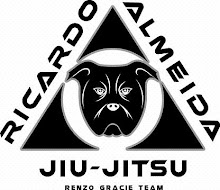I wanted to update on my progress with the two things I decided to work on a couple weeks ago.
1. Passing Closed Guard
I started to work with Brittany on passing her closed guard since she has really strong legs and she helped me with the elbow drive method. I was trying to drive my elbows out more than down to hit that 'spot'. I've been remembering that and I've also been using the knee in the butt method more. For some odd reason, it didn't strike me that actually breaking the guard was important. I was trying to work the techniques without even separating the legs and strictly using my elbows (not even backing up). I can't understand why I missed that as it seems really obvious but I've got it down now.
2. Controlling in Mount
I haven't had much time to consciously work on riding out the mount in live situations. However, I went to a class that Dennis was instructing and we did a drill where we executed all of the submissions we new from mount. He also gave a tip about being able to stay in control when the person is bucking a lot. He said the head acts as a counter weight. When the person bucks, the head should go up and back. Very similar to bull riding.
I will continue to work both of these.
July 14, 2009
Subscribe to:
Post Comments (Atom)

1 comment:
Hah - yeah, I rarely get to the actual passing the guard part, because I have enough trouble opening the damn thing! ;)
Personally, I really dislike opening the guard with my elbows into their thighs. That's for three main reasons:
1. I try to follow Saulo Ribeiro's philosophy (he mentions this in both his book and DVDs) that you should treat your training partner "like your best friend," so avoid hurting them unnecessarily.
2. Digging into the thighs sets you up to get triangled. If they open their legs as you're pressing down and they time it right, you're liable to collapse to one side. As your arm is already bent and pressing down, they can quickly bring their leg over the top, lock their legs, then work to tighten up the position.
3. It's a technique that relies on pain compliance and force rather than leverage. Leverage is a constant, as it depends on body structure, but pain compliance depends on their pain theshold, which can vary a lot from person to person.
Recently I've been playing a lot with something I refer to as the "twisting guard break," which relies on leverage rather than pain. Short summary here, and the lessons in which I've been shown it here.
Post a Comment